Powerful, complex in structure, resistant to enormous loads, the hip joint is prone to various pathologies that lead to the occurrence and development of pain.
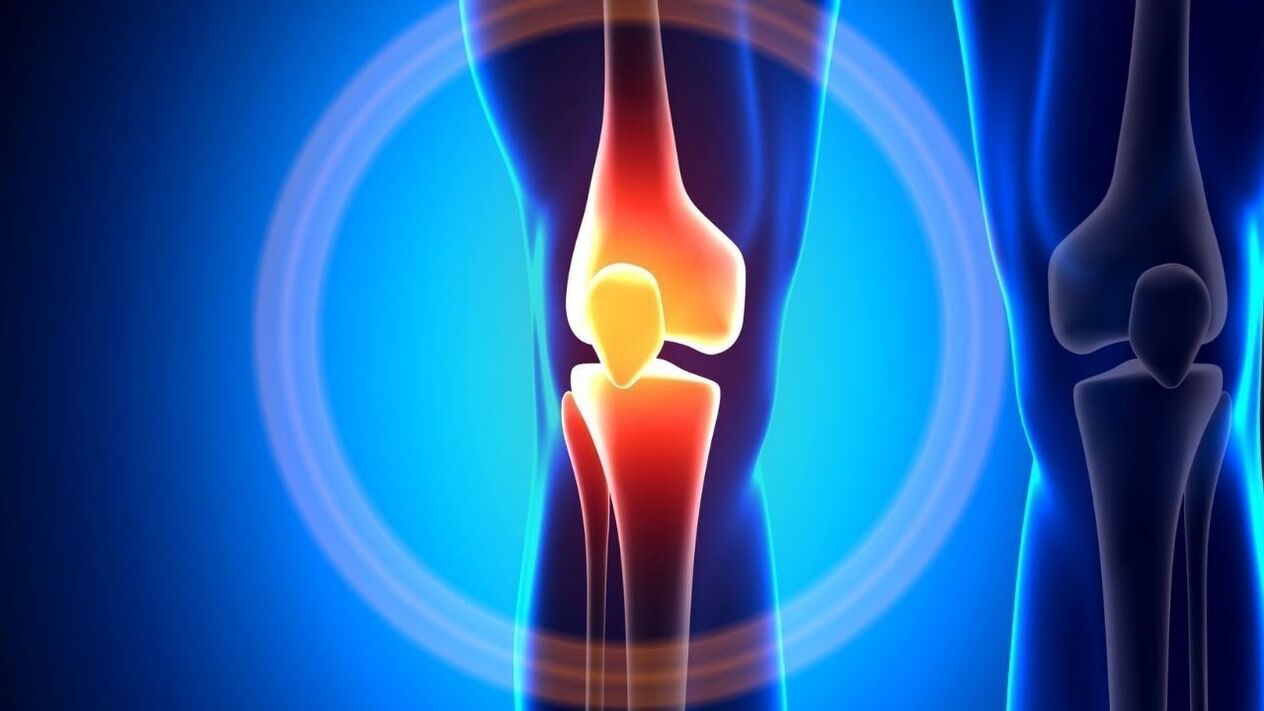
Hip pain occurs due to:
- injuries;
- infectious infection;
- destructive processes in the joints;
- inflammation;
- metabolic disruptions.
A person may feel that he "gives" in the groin, buttocks, knee. Perhaps the appearance of lameness, muscle atrophy, weakness, limited functionality of the limbs.
Practice shows that the nature and intensity of the pain syndrome can be different:
- starting (until you "disperse");
- night;
- evening;
- constant (light, medium, strong).
Why does the leg hurt in the hip area
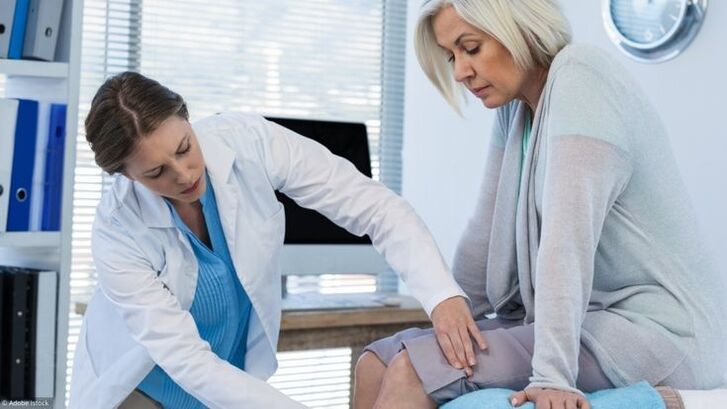
There are many joint and extra-joint disorders that lead to pain syndrome. Between them:
- coxarthrosis;
- arthritis of various nature;
- pseudogout;
- Kening's disease;
- fractures, dislocations, bruises;
- tendinitis;
- myositis;
- bursitis.
Hip joint pain: which doctor should I go to?
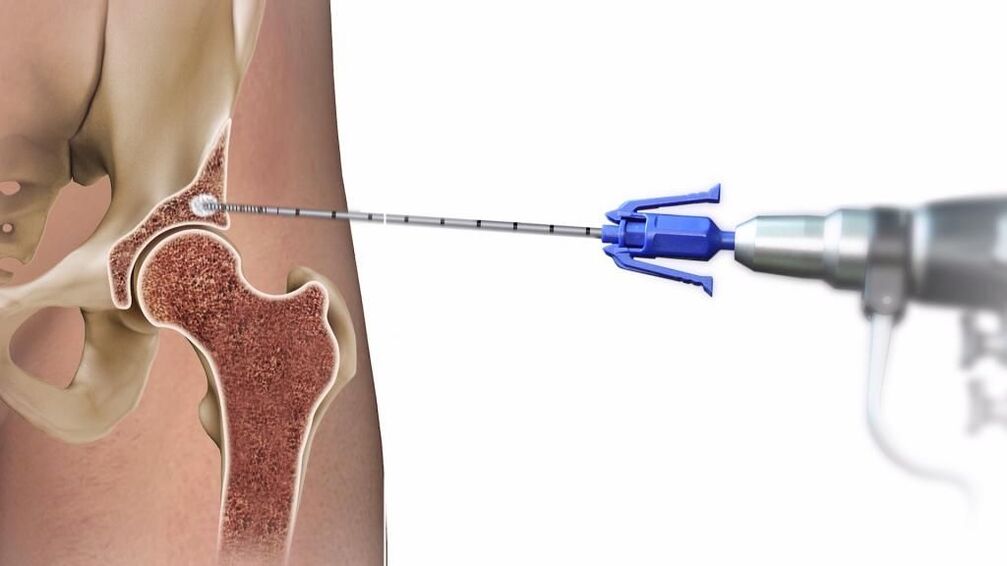
It goes without saying that the number of pathologies that lead to pain or numbness in the hip cannot be treated by a specialist. Most likely, you should contact a traumatologist or rheumatologist. A consultation with a surgeon may be required. Due to the fact that the pain "shoots" in the groin, buttocks, lower abdomen, a person can be referred to a neurologist. So, coxarthrosis "masks" as sciatica, nerve root problems, herniated disc. But the reverse situation is also possible, when neurological pathologies are suspected, but joint disease is detected.
Women often cannot differentiate the cause of pain in the groin: the inflammation is appendix or joint disease. A visit to the gynecologist will bring clarity. A urologist will help men determine if there are prostate pathologies.
Diagnostic measures
In medical practice, a well-coordinated scheme has been developed, the use of which allows you to fully establish why the hip joint hurts, what to do and how to treat it.
During the first visit, the doctor's job is to take a medical history. A person is asked about lifestyle, physical activity, to find out if there were any relatives suffering from joint diseases. An external examination of the joint and its palpation are also performed. In the presence of inflammation, this will help narrow the circle of hypothetical pain-producing ailments.
In addition, various laboratory tests and hardware studies are awarded. As a rule, resort to:
- tomography;
- radiography;
- endoscopy.
You will need immunological and microbiological blood tests, a test for rheumatoid factor. It may be necessary to examine the synovial fluid of the joint.
Treatment methods
Due to the fact that the pathologies are quite diverse, they cannot be treated according to a single scheme. For example, inflammation of the hip joint, its symptoms and treatment will differ from the work of a doctor with an injury. In the event of a fracture or dislocation, a rheumatologist or surgeon will prescribe joint immobilization. In infectious and purulent pathologies, it is necessary to undergo a course of antibiotics.
Inflammatory and degenerative diseases require the use of the following groups of drugs:
- non-steroidal;
- diuretics;
- chondroprotectors;
- muscle relaxants;
- vitamin complexes.
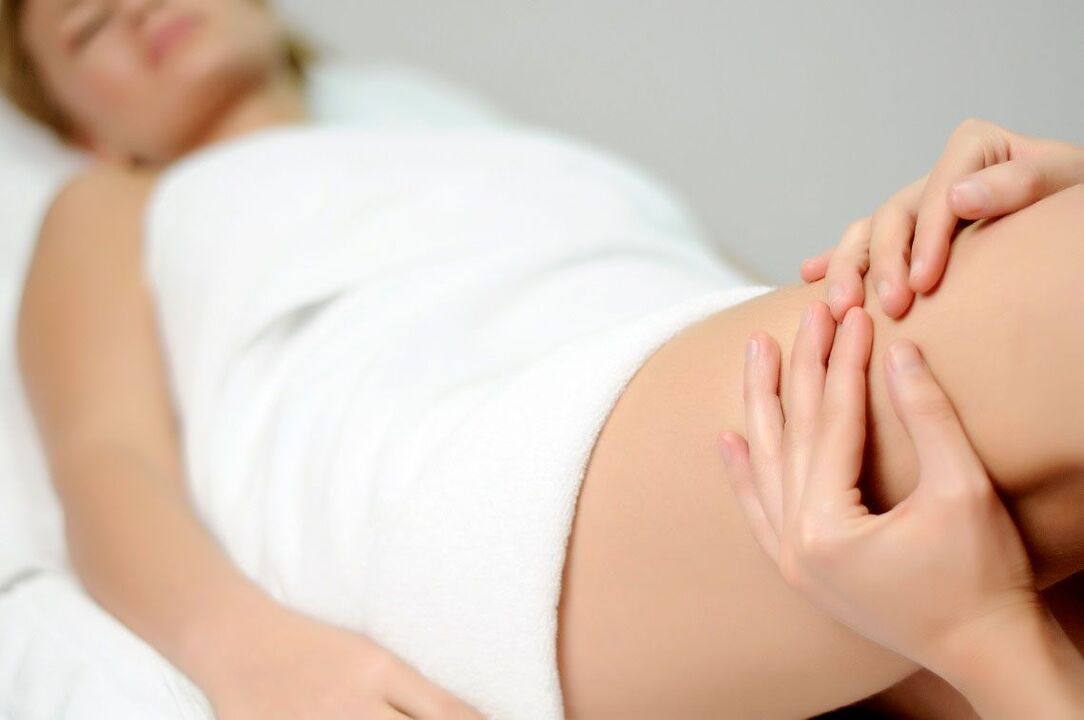
In this case the treatment is long, carried out by several courses, which can last several years. In addition to drug therapy, a person performs exercises, makes efforts to reduce weight, undergoes physiotherapy procedures. If it is not possible to help the patient with conservative methods, surgical methods should be used.
How the hip joint hurts, what symptoms characterize diseases that can cause pain, we considered traditional methods of treatment. However, various joint diseases have been known to man for many thousands of years. Thus, traditional medicine has developed a considerable amount of knowledge on how to help a patient who is worried about their joints. Of course, herbal medicine, lotions, compresses, ingestion of decoctions and tinctures cannot be the main method of treatment, but doctors recommend it as an addition to the main therapy. Himself, without consulting a specialist, you cannot drink or apply anything, because there is a danger of getting an allergy, a burn, or simply wasting time and effort without achieving results.
Treatment of pain in the hip joint with folk remedies helps to achieve an anesthetic effect, strengthen the body. Most often, alternative medicine offers public components: burdock roots, pork fat, garlic, cinquefoil, dandelion, leaves of berry bushes, buds and fruits. For example, the usual rosehip broth is a storehouse of vitamin C and an excellent diuretic that removes excess fluid and unnecessary salts, reducing the load on the legs and heart.
Pain radiates to the leg when walking - causes, symptoms
If you feel pain while walkingthighcovering the body fromlower backto the lower leg or located in the hip area, you need to consult a doctor. Diseases of the hip joints, experiencing high loads duringwalking, running, fitness classes, progress rapidly and can lead to disability. In order for the movement to bring joy and benefit, monitor the health of the musculoskeletal system. If there are pain symptoms, you need to be examined and treatment started as soon as possible. In most diseases, bone tissue, cartilage and joints are destroyed and cannot be restored. You can only remove the inflammatory process, stop or slow down their destruction.
general description
The hip joint is multiaxial, cup-shaped. It combines the pelvis and femur into one system, which allows a person to walk, liftlegstand up and set aside. Works with every step, squat. While the joint is healthy, we do not feel it. But with inflammation, pinchingnerves, there is aching, intensifying or sharp pain. It is located inthigh, but as the disease progresses it spreads,returnsinleg, inlower back.
Otherwiseto dealinflammatory process:
- the size of the joint bag is reduced, which contains synovial fluid - an intra-articular lubricant that reduces friction and slows down the wear and tear of the joints;
- the membranes that protect the joint are damaged;
- cartilaginous, bone tissue is destroyed.
Prevention
It is possible to protect the hip joints from destruction, to maintain mobility until old age, if you monitor your health. Diseases of the musculoskeletal system provoke excess weight. The load on the joint joints increases, and they wear out faster. It is not only the body weight in kilograms and the height that is important, but also the ratio of muscle to fat tissue. Strong, trained in the gym, the muscles form a muscular corset that supports the body in an upright position, reduces the load on the spine, hip and knee joints, and feet.
The destruction of cartilage, bone tissue occurs with a lack of calcium and other trace elements. Include more vegetables, lean fish, dairy products, cheeses in the menu. Take vitamin-mineral complexes recommended by your doctor. Avoid injury. Don't wear uncomfortable shoes. Walk more, 2-3 times a weekDoexercises to strengthen and stretch muscles.
Causes of pain
Hipcan beto get sick:
- after an embarrassing fall, blow: if the pain does not go away in 2-3 days, you need to visit a traumatologist,Doradiography;
- with the development of arthrosis - the joint becomes inflamed, the pain is felt at rest and intensifies withwalking;
- with arthritis - aching pain, aggravated at night;
- in violation of metabolism, blood flow - the tissues do not receive enough nutrients, oxygen, the removal of toxins is delayed;
- if an infection enters - abrasions, scratches, purulent rashes on the thigh can become a gate for infection, penetrating into the joint, causes acute infectious bursitis with acute unbearable pain;
- with diabetes mellitus, other systemic diseases;
- with inflammatory processes in the body, accompanied by fever or with the risk of spreading to the joint.
It is impossible to make an accurate diagnosis on your own. For pain that does not go away for 2-3 days, you need to see a doctor,Doinvestigation.
Variety of pain
Acute pain in the hip joint occurs with injuries and local inflammatory processes. It could start withRightorleftside, but with the development of inflammation, it covers the girthflanks,returnsinlower back, inlegs. The doctor, after examination, will prescribe anti-inflammatory drugs that quickly relieve pain. But sometimes it is necessary to continue treatment after its disappearance in order to remove the causes that caused the inflammation.
With aching pain, it is more difficult for a doctor to make a correct diagnosis. It can arise in one place and give to another. If it appears periodically, you need to notice what its manifestations are connected with: at rest, withwalking, squats, sudden movements.
If pain symptoms appear for more than 6 months, the disease has become chronic. To establish the diagnosis, hardware examinations are performed: X-ray, ultrasound, MRI,it is being doneblood analysis.
Diseases and their characteristic symptoms
Achethighoccur with various diseases:
- bursitis;
- arthrosis;
- coxarthrosis;
- arthritis;
- inflammation of the ligaments;
- neuralgia.
Bursitis
Bursitis is an inflammatory process in the joint bursa. It is manifested by acute pain, fever, deterioration of general well-being. A hot, painful bump forms under the skin.It healsThis disease is an orthopedic traumatologist.
Osteoarthritis
A chronic disease in which the bone and cartilage tissues of the joint are destroyed. It develops after injuries, during menopause in women, with metabolic disorders, with excessive stress in athletes and during intense physical work. Feeling tired in the early stageswalkingpain with sudden movementsfeet.If treatment is started at an early stage, the progression of osteoarthritis can be significantly slowed down and physical activity can be maintained into old age. In the second stage, destructive processes in the joint affectnerves. The pain comes on in the morning and goes away in the afternoon. She cangiveon my knees,lower back. There is tissue swelling. With the progression of osteoarthritis, pain persists around the clock, mobility is limited.
Coxarthrosis
With coxarthrosis, the composition of the synovial fluid changes. It does not lubricate the components of the joint, and with each movement, severe pain is felt, the femoral head is displaced and deformed. The disease develops in old age or after injuries. At the initial stage, aching pain is feltRightorleftside while walking. When under deformationpinched nerves, the pain intensifies, lameness appears. At the third stageleftorRightthe leg is shortened due to the deformity of the femoral head, the difference may be 1-1. 5cm.
Arthritis
Aching pain outsideflanksbuttocks many consider the symptomsosteochondrosis. But when making a diagnosis, you need to rule out or confirm arthritis with hardware diagnostics. Several types of arthritis are diagnosed: purulent, rheumatoid, tuberculous, psoriatic, reactive.
Inflammation of the ligaments
Tendonitis - inflammation of the ligaments, tendons is manifested by unbearable pain, swelling, redness of the skin, crunching when walking, fever. Inflamed tissue canpinchnerve endings, which improve the pain symptom. It is forbiddento dealhis own painkillers. Such treatment can give complications - the development of tendinosis, when the inflamed ligaments begin to collapse.
Neuralgia
If onethe hip hurts, gives way to the legburning pain along its lateral surface, further examinations are performed to confirm neuralgia,causes of pinched nerve.
Other symptoms
To understand if there is a pathology in the hip joint or the pain is caused by the fact thatosteochondrosis gives to the leg, the following symptoms will help:
- when walking, running, bending over, the joint creaks or clicks;
- flexibility is lost, freedom of movement is limited: it is difficult to bend over, climb stairs, sit down;
- body temperature rises,osteochondrosisthere is no such symptom;
- gait changes;
- pain symptoms are manifested when walking, trying to lift, putting the leg aside, but body movements, hands do not cause discomfort.
Pathology diagnosis
Inosteochondrosisand pathologies of the hip joint similar symptoms. To make an accurate diagnosis, the doctor examines the patient, clarifies the complaints, the nature and localization of the pain. To determine,how to cure the diseasewhich drugs are contraindicated for the patient, additional examinations are prescribed:
- a blood test - shows whether there is an inflammatory process in the body, how strong it is;
- urine analysis - reveals hidden edema, disorders in the excretory system, the degree of intoxication of the body;
- blood test for the amount of fibrinogen, other non-specific markers;
- rheumatic tests - determine the rheumatoid factor;
- proteinogram - reveals inflammatory processes, malignant and benign neoplasms, characterizes the composition of protein compounds in the blood;
- radiography - shows the condition of bones, cartilage, tendons, reveals fractures, cracks, breaks, dislocations, the level of destruction or deformation;
- MRI or computed tomography is needed to see the pathology of soft tissues: muscles, ligaments;
- Ultrasound - shows the condition of the joints, an increase in the volume of their membranes during inflammation, the presence of synovial fluid in various parts of the joint.
Features of the treatment of pain of a different nature
There is no single scheme for the treatment of pathologies of the hip joint. Arthritis only needs medicine ifpinchednerve endings are different. After the diagnosis is made, the doctor prescribes treatment taking into account the stage of the disease, gender, age of the patient, other chronic diseases and possible allergic reactions.
Painful sensations, inflammation in arthritis are suppressed by anti-inflammatory drugs. To prevent the progression of the disease, patients take hormonal drugs. In addition to drug therapy, physiotherapy is performed.
Bursitis is treated with nonsteroidal anti-inflammatory drugs. If the tests show a strong inflammatory process, injections are made directly into the joint. The doctor chooses an injection solution, having studied the features of the course of the disease, the general condition of the patient's body. With a high risk of complications, a severe course of the disease, treatment with a corticosteroid is performed.
In the initial stages of coxarthrosis, treatment with anti-inflammatory drugs is effective. But if the patient didn't go to the doctor when she heard about itit hurtsleg when walking and the disease is advanced, complete or partial replacement of the joint is required. To restore the cartilaginous tissue, condoprotectors are prescribed.
In pathologies of connective tissues, glucocorticosteroids are prescribed.
It is impossible to use potent drugs on your own, without the supervision of a doctor. During therapy, the doctor monitors the general condition of the body, periodically prescribing blood and urine tests.
Inflamed hip joint what to do how to treat
Septic arthritis of the hip. Diagnosis and treatment
Septic arthritis- a disease of childhood, and for the hip joint the average age is even lower than for arthritis of other localization: 70% of cases occur in children under 4 years of age. The younger the child, the worse the outcome of hip arthritis is. A child's refusal to walk is often associated with bacterial infections of the hip joint.
In oneResearch, during which the authors excluded all patients who refused to walk due to an evident previous pathology, it emerged that in 21 out of 22 patients the cause was a bacterial infection. Osteomyelitis and septic arthritis occurred equally frequently and accounted for 14 of 22 cases. Discitis also occurred in a significant number of cases.
Increasedtemperatureit was in 82% of patients with a bacterial infection, but only 17% of those without an infection. The number of leukocytes in the blood and the ESR did not increase.
Pathogenesis of septic arthritis of the hip joint
Inseptic arthritis of the hipIn the inflammatory process, Staphylococcus aureus is often sown. The infection usually affects the joint cavity from an osteomyelitis focus within the joint capsule. Osteomyelitis, as a rule, is of hematogenous origin and affects the metaphysis of the thigh, penetrating through the supply vessels. The infection may come to the surface as a subperiosteal abscess.
Inflammation of the hip jointusually it develops due to the penetration of the pathogen from the focus of osteomyelitis in the femoral neck into the joint capsule. There is a significant difference between the development of the disease in older and younger children. In older children, this disease is usually the result of femoral neck osteomyelitis. In neonates, it may be the result of hematogenous dissemination in generalized septicemia.
articular cartilagecannot bear the increase in intra-articular pressure caused by the pus produced by the staphylococci. In addition, staphylococcus produces a staphylokinase activator, which contributes to the destruction of articular cartilage. Cartilage can withstand these forces for 4-5 days before the onset of destructive changes. Other organisms that can cause septic arthritis of the hip in children include pyogenic strep and Pfeiffer's bacillus.
streptococcal infectionusually accompanied by a much more rapid increase in signs and symptoms. Pfeiffer bacillus infection is usually responsible for septic arthritis that develops in children in the first 12 months of life, although it can occur in the first 2 years of life. Gonococcal arthritis should be suspected in young adults.
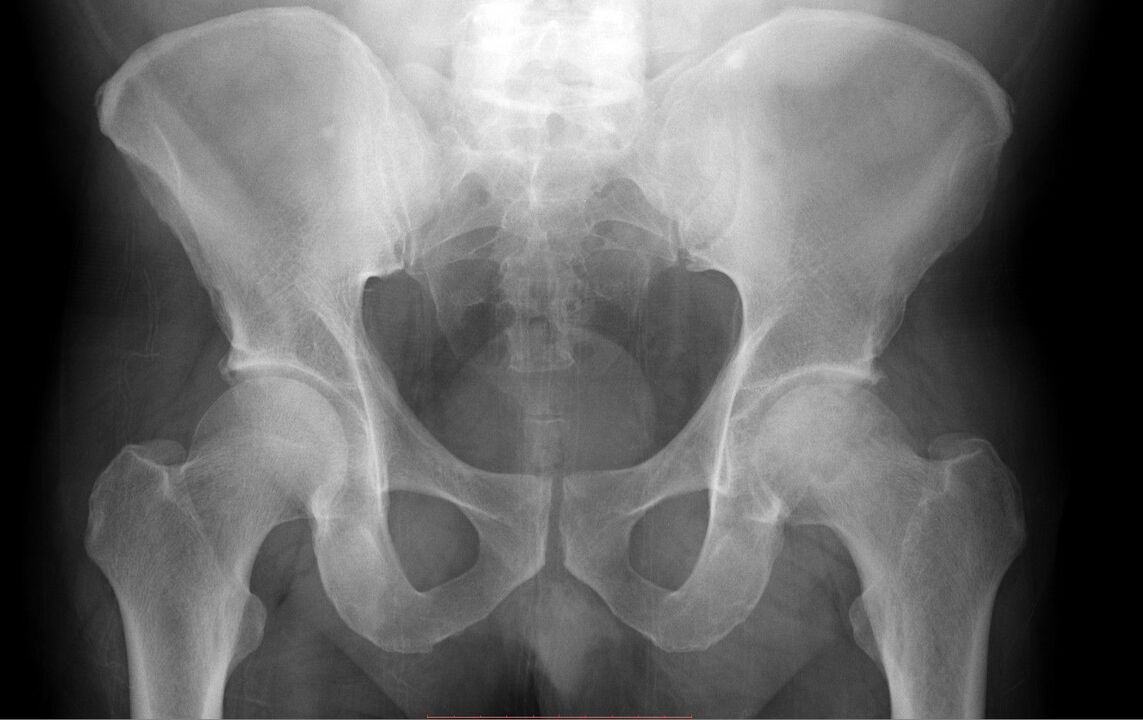
Clinical picture of septic arthritis of the hip joint
Usually,babyYou are admitted to the emergency room with high fever, irritability and severe pain in the affected hip joint, accompanied by significant limitation of movement in all directions and muscle spasm. The child walks with a limp or refuses to walk at all. The affected hip is flexed, rotated outward, and abducted. During the examination, the patient has pain in the groin and above the hip joint, intoxication.
Numberleukocytesin synovial fluid, on average, it is 57, 000 µl, but it can vary from 10, 000 to 250, 000 µl. A shift of the formula to the left is characteristic, blood cultures are positive in more than 50% of cases. The level of mucin in the joint fluid was lowered in all cases, as was the level of glucose relative to its blood content in most of the patients examined. The erythrocyte sedimentation rate is usually increased.
In one study, all patients had some degree of soft tissue swelling in the hip area. The younger the child, the more likely he is to detect joint space expansion. In another study, many patients initially had plain x-rays. The most typical was a pathologic subluxation of the hip with widening of the joint space. Some patients presented with osteomyelitis of the proximal femur.
Differential diagnosis of septic arthritis of the hip
Septic arthritis of the hipshould be differentiated from a number of other diseases. Transient synovitis can manifest with severe pain, severe lameness, and limitation of motion in the hip joint. Radioisotope scanning helps differentiate this disease from septic arthritis. If this cannot be done, skin traction on the hospital bed will help make a differential diagnosis. A significant improvement in the condition with a decrease in symptoms within 24 hours indicates transient synovitis.
If your doctor suspectsseptic arthritisthe joint must be perforated, the effusion removed, and antibiotic treatment initiated. Hemophilia can be difficult to differentiate, but such patients are usually registered for this disease. If this disease is suspected, urgent decompression is indicated to prevent damage to the femoral head due to increased intra-articular pressure.
Rheumatic attackit can present with significant pain and limited range of motion in the hip joint. As a rule, with this disease there is volatile arthritis and arthralgia, which helps in differential diagnosis.
Treatment of septic arthritis of the hip
Perhaps the most importantmomentWhat the emergency physician should be aware of is that delaying the diagnosis of this disease and late initiation of treatment worsens the prognosis and outcome of this disease. In one study, poor outcome was observed in nearly all cases where treatment was started more than 4 days after symptom onset.
Purpose of the treatment- removal of the effusion from the joint to prevent destruction of the articular cartilage and the formation of adhesions, as well as decompression of the joint to prevent reduced blood supply to the epiphysis. Adequate doses of parenteral antibiotics are required. Initially, it is recommended to use antibiotics of the penicillin group, but recently other drugs have been given preference. An important component of the treatment is the puncture of the joint cavity and its washing. The physician should select the appropriate antibiotic based on the most likely organism suspected based on the patient's age and onset characteristics. Inoculation and Gram stain play an important role in the choice of antibiotic.
Most often foundstaphylococcal arthritis, amenable to methicillin or oxacillin therapy. If gonococcal arthritis is suspected in adults, it is recommended to prescribe intravenous penicillin at a dose of 10 million IU / day.
Unfortunately, a way to completely get rid of coxarthrosis has not yet been invented. Even joint arthroplasty does not guarantee that dystrophic changes will stop in it. Of course, the earlier the diagnosis is made, the easier it is to get the disease under control and prevent relapses. With a disease in stages 1-2, it is quite possible to live and feel comfortable if you follow some rules and restrictions.
Treatment will be effective only after a complete diagnosis. The task of treating arthrosis in this case is to increase the joint space, restore the efficiency of the joint and, as far as possible, regenerate the cartilage tissue.
If you experience frequent or recurring hip pain, don't close your eyes. Will it be possible to detect the disease at an early stage? You can stop the disease and prevent its development. If the doctor will please you with the absence of a serious diagnosis, so much the better! Continue to lead a healthy lifestyle and do not forget to visit the orthopedist regularly - after all, the first alarm bell has already been.
























